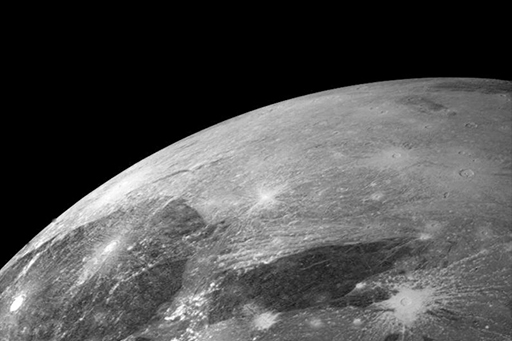2.9 Ganymede
Ganymede is the largest moon in the Solar System and has a magnetic field that shields it from certain types of radiation. Its outer layer is mostly ice. This ice might contain liquid water in molten pockets. Looking closer, Ganymede has two types of surface. The first type (the ‘dark regions’) is heavily cratered. This might tell us about its age, but it also means that a lot of disturbance has happened there. The second type of surface is known as the ‘grooved regions’. These areas are less cratered than the first type.
Ganymede’s ice is not pure, because the upper parts of the ice may contain rocky or carbonaceous dust. It is this material – in reaction with liquid water – that could provide energy sources and nutrients for life. To explore these pockets, a space probe would have to infiltrate them – similar to the approach on Europa.
A study released on 1 May 2014 [Tip: hold Ctrl and click a link to open it in a new tab. (Hide tip)] suggested that if Ganymede’s ice is salty enough there will be layers of salty liquid between types of ice stable at progressively higher pressures, and (important in the contest of life) between the lowest ice layer and the underlying rock.’
See also: Ice-brine-ice-brine layering in Ganymede? News released on 1 May 2014 of a study suggesting that if Ganymede’s ice is salty enough there will be layers of salty liquid between types of ice stable at progressively higher pressures, and (important in the context of life) between the lowest ice layer and the underlying rock.

